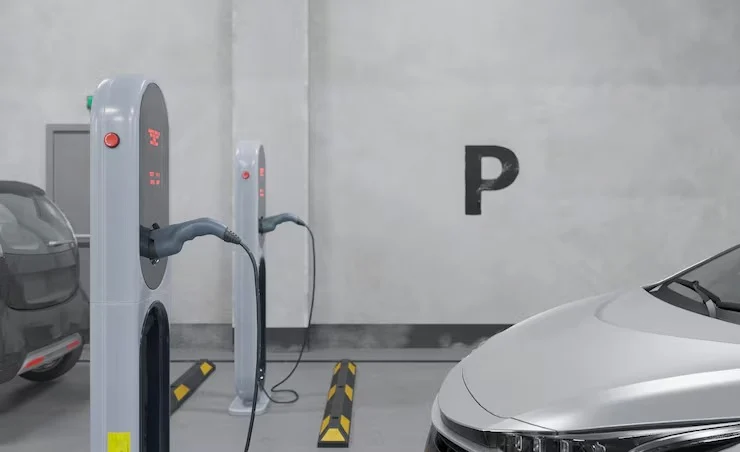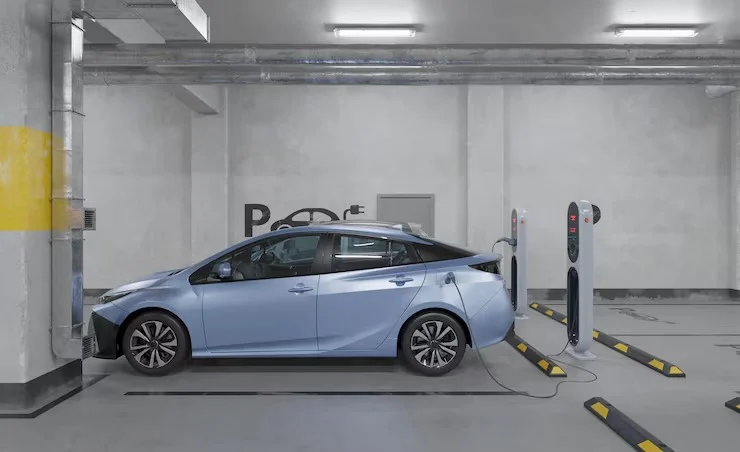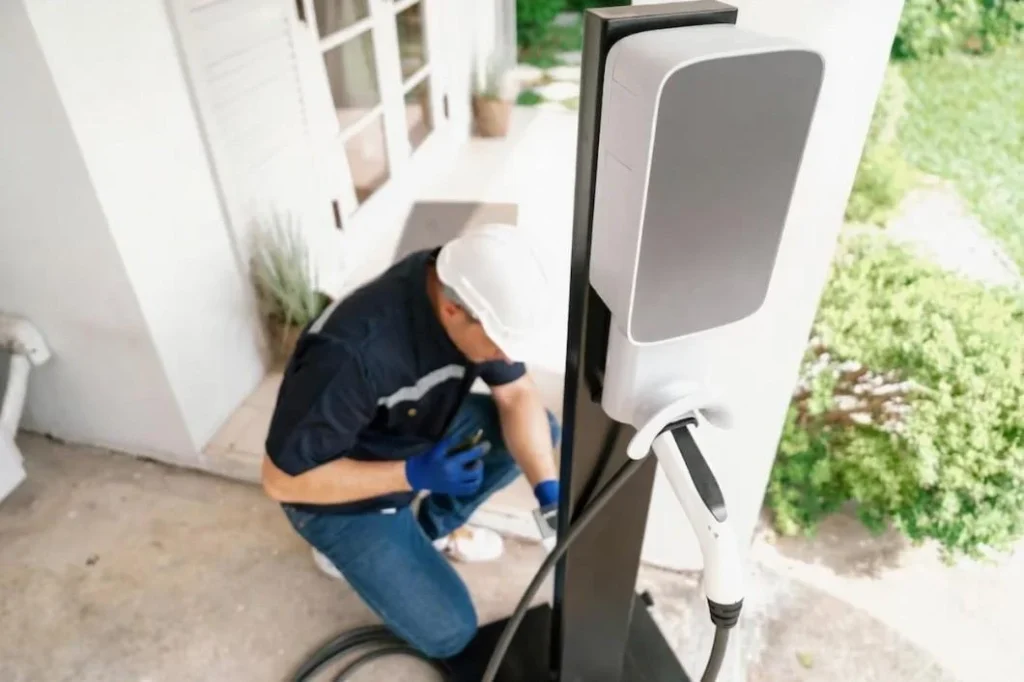When someone asks: “EV charger inside or outside garage,” they are basically weighing on whether it’s an indoor installation (in the garage or any enclosed space) or outdoor (on exterior walls, driveway, carport, etc.). Each has its own pros & cons.
So, the deciding factor depends upon:
- Layout constraints (garage available or not; distance from electrical panel; where car is parked)
- The Climate and weather (rain, snow, heat, sun exposure, humidity)
- Code and regulations (local)
- The Cost (installer, materials, durability, maintenance)
- Desired convenience, aesthetics, security, and safety.
We’re going to cover all of them.

What to Consider: Key Concepts
Before comparing inside vs outside, some key technical/regulatory considerations are:
1. Ingress Protection/Enclosure Ratings (IP, NEMA, etc.)
These describe how well the charger (and in some cases its cords/connections) are protected against water ingress, dust, and impacts. From an outdoor use perspective, the higher the rating, the better.
IP rating: The first digit refers to protection against solids (dust, etc.), and the second digit refers to protection against liquids (water, etc.). To use something outdoors, an IP rating of 65 or higher is desired; this is because it affords protection against water jets, heavy rain, etc.
NEMA ratings (commonly used in North America): NEMA 3, 3R, 4, 4X, etc. These protect against rain, snow, dust, etc. 4X offers protection against corrosion.
2. Local Codes & Permitting
Some of the electrical codes may change depending on whether installation is indoors or outdoors. Needed to meet some requirements:
- Cable types and conduits rated for outdoor/wet/damp locations.
- Height from ground (to avoid flooding, splashes). For example, some rules in the NEC mandate that outdoor EV charger control boxes be kept at a minimum height off the ground.
- Ground-fault/GFCI protection and surge protection for safety.
- Permits or inspections might be required for an installation. The installer must comply with manufacturer instructions, and local building or electrical code.
3. Durability & Weather Resistance
Since much of the time these chargers stay exposed to UV rays, rain, temperature extremes, and even snow and ice, one’s best bet is to ensure that the charger remains weatherproof.
4. Electrical Load and Wiring
Level-2 chargers draw heavy current. Wiring has to be sized for the load. Another important aspect is the distance from the panel, as longer runs mean thicker gauge wire, more conduit, etc. Outdoor runs generally call for even more protection.
5. Convenience and Cable Routing
Consider where your car will be parked, whether you will have to stretch the cable under doors or over doors, or whether the cords will be exposed to damage. These are issues relating to function and safety.
Indoor Installation (e.g., Garage or Enclosed Space)
Advantages
- Weather Protection
- Not being exposed to rain, snow, sun, or ice lessens the chance of corrosion or water ingress and freeze damage.
- Usually, the temperature remains relatively stable, prolonging the lifetime of components.
- Security and Safety
- Less risk of vandalism or malicious acts.
- Controlled conditions; easier to keep dry, clean.
- Better Wiring and Proximal to The Panel
- Wiring routes easily. Generally, the electrical panel is already inside or near the garage, the wiring is shorter, and, hence, the cost is lower.
- The simplest in most cases for installation.
- Aesthetic and Clutter Considerations
- The charger and cords are hidden and roam free from sight.
- Chances of cords becoming tripping hazards or suffering UV/sun damage are much lower.
- Less Maintenance and More Lifespan
- Such environments offer less wear and tear on the chargers.

Disadvantages
- Space Constraints
If your garage is packed up with vehicles or used for storage, there may not be an acceptable location.
- Accessibility and Workflow
If it becomes a matter of daily parking, it can be a bother to bring it inside or run a cable from inside.
Suppose we have the garage door shut; in such a case, the cord has to pass either underneath it or through a wall/window. This may cause wear on the cord or require some modifications to the garage.
- Ventilating
The EV charging station does not usually emit any harmful gases, but there may be a possibility of build-up of heat here. If ventilation is away, it might affect its performance and might become unsafe.
- Garage Modifications Costs
Suppose you want a pass-through hole or wall penetrations, conduit, or whatsoever to route the cable.
What Codes & Standards You Should Check?
Depending on location, but generally:
- Electrical code (NEC in U.S., or your own local country’s equivalent) – You will find sections and requirements for EVSE/EV charging, wet location, equipment enclosure ratings, circuit capacity etc.
- Building codes – wall penetrations, mounting required, permits etc.
- Manufacturer instructions: These usually specify if installation outdoors is permissible, the minimum clearance, ambient temperatures, environment ratings, etc.
- Inspection/permits– A lot of jurisdictions require inspection of the electrical work, mostly for Level‑2 charger installations.
- Comparison– Interior vs Exterior (Garage-side Against Wall vs Driveway, etc.)
Practical Tips for Both Scenarios
Were it inside or outside, the charger must have a dedicated circuit (breaker, conductors of appropriate size). This circuit must not be shared with heavy appliances.
- Ground-fault protection (GFCI/RCCB) must be installed properly.
- Use the proper conduit and weather-rated cable, connectors, and fittings, particularly for outside use.
- Select a charger/EVSE with environmental ratings (IP/NEMA). Get the higher rating if the region experiences heavy rain, flooding, or extreme cold or hot weather.
- For outdoor units: install at least some shelter or cover to reduce direct exposure if possible (awning, overhang). Even a small shelter can do wonders.
- Cable routing: Never pass cords under doors unless protected. Ensure no hard bends or tripping hazards; use cable clamps, hooks, or holders.
Specific Scenarios / Solutions
Some situations and what tends to be best for each are introduced below.
Scenario A: You have a garage, and most nights the EV sits in.
Best Option: A charger mounting inside the garage on the wall closest to the parking position gives maximum protection and has the easiest route for the cord.
Even if you have to open the garage door: If the garage is deep enough, then mounting the charger inside might necessitate running the cable under the door. This could just work but could cause some wear to the cable or even allow weather into the garage. Better solution: create pass-through – a hole through the wall just for the cable with sealing and weather-proof sleeve.
Scenario B: One parks outside on the driveway, or on a carport since there is no garage on the lot; car remains outdoors for the most part.
Best Option: Install outdoors on an exterior wall or pedestal, somewhere convenient to plug in. Select an outdoor-rated charger. Provide some protection (overhang, cover).
Scenario C: Mixed situation — sometimes park inside, sometimes outside; or want flexibility.
Put the charger close to the garage wall but outdoors (wall or pedestal), so that the car gets charged whether it is outside or pulled into the garage.
The other option is to go with an indoor charger plus a long weather-rated cable that goes through the wall or door opening, which comes with its own risks and drawbacks related to safety, the exposure of the cable to weather, and convenience.
Cost Considerations
- Outdoor-rated charging equipment is costly with higher IP, NEMA ratings, better sealing, and better enclosures.
- Extra costs may also be: weatherproof conduits and protective covers, or possible considerations for the pad or pedestal, and maybe extra labor as well.
- Maintenance costs slightly more outdoors (replacement of seals, check corrosion, more frequent inspections) but it might cost more indoors to do modifications (pass-through, cable lengths) if your parking spot is far or garage layout inconvenient.
- So, if a build is made durable outdoors, it might cost more to maintain and depending on use, the convenience of that installation could weigh over that.
Safety & Liability
- Substandard installations that do not use components rated for wet locations, passing cables under the door without the requisite protection, or ones with no GFCI can lead to an electric shock/fire hazard, or voiding of warranties.
- Water plus electricity is pretty much one dangerous combo; they say the chargers are protected, but in any unlikely event of a poorly sealed connector, it can still let moisture in.
- Weather, pests, or even vandals can mess up the installations. So being outside puts it right there on the world stage.
- Always hire a licensed electrician and follow the charger manufacturer’s instructions, as well as local codes.
“EV Charger Outside House“: What to Watch
A charger installed on the exterior wall of the house involves some extra considerations:
- Wall Material and Mounting
- Is it masonry or siding or concrete or brick: anchor types vary. Anchors have to sustain the weight of the charger.
- Never allow water to enter wall penetrations: appropriate sealing ought to be applied-flashing, caulk or gasket.
- Cable Routing & Penetrations
- If bending cable through the wall, sealed type conduit or sleeve shall be used. Gasketed, through-wall must be waterproof.
- If cable is routed along outside, make sure the conduit shields it from UV, weathering, and physical damages.
- Protection From Direct Rain / Splash / Sun
- Even a slight overhang helps.
- Consider locating the charger under eaves, carport roof, or do carry out installation of a weather shield.
- Height Off Ground
- To prevent splashes of water-flooding. Some Codes shall require minimum heights above the grounds.
- The unit will be even more accessible for tampering. Consider lockable features; tamper-resistant hardware; maybe even camera coverage.
- Visual Aesthetics & Impact
The unit will be seen; some wish to hide it. Choose the color/design that suits it; hide cables well.

Key Questions
- Are EV chargers’ waterproof?
Most EV chargers would not be considered waterproof in the sense that they can stay submerged indefinitely unless the charger has a specific NEMA or IP rating that assures such protection by definition. There are weatherproof or water-resistant chargers to varying degrees.
IP ratings are a great watchword: IP65 is a rating whereby the charger is dust tight and is protected from water jets. IP66 even more so; IP67 can tolerate temporary immersion.
Enclosure ratings such as NEMA 3, 3R, 4, and 4X tell you what level of protection they provide. NEMA 4X adds protection against corrosion. Also consider installation: a good rating may be compromised if the installation is poor (seals, cable routing, water puddling, etc.).
So: that means EV chargers are not really considered ‘underwater safe’ unless specifically our rating says it is. Most high-quality, by-the-books outdoor models will handle downpours and splashes.
- Is it possible to install a Tesla charger outdoors?
It is, of course, by certain considerations:
Use a Tesla charger (or third-party) that is considered outdoor-rated along with a proper enclosure, weather protection, and others.
Ensure that mounting, electrical supply, and cable are correctly rated. Comply with any local code (for example, height, conduit requirements, ground fault protection).
Install protective covers/canopies if the climate is severe. Most of the Tesla Home Chargers are designed to be installed outdoors but installation must follow code. (And is legal, as well as common.)
Summary & Recommendations
Case-wise wrap-up recommendations:
- If it is mostly parked inside a garage, the charger should be installed indoors, wall-mounted, and close to the electrical panel. Use the chase/wall penetration for the cable as necessary. Less risk of element exposure ensures a longer life of the charger.
- An outdoor-rated charger should be selected if the car is being parked exterior for the most part, or if there simply is no garage to speak of (IP65/NEMA 4, or better). The charger can be mounted on an exterior wall or a pedestal, with protection from direct exposure, while also ensuring code compliance.
- Always run its own dedicated circuit; proper conduit/cable, GFCI protection, sealing and sealing around walls/penetrations are a must.
- If outdoors, suitable protective measures shall be employed, including an overhang or cover; secure connections, and waterproof housings for cable morph/plug.
- For Tesla chargers: yes, a good number of Tesla models are mountable outside—just make sure you verify your particular model’s specs and do the installation right.
- For waterproofing: check IP/NEMA ratings, sealing, protection for your cable, and route it right. And please, don’t go around assuming “weatherproof” just means “you can dunk it underwater.”


